Large Victorian Desk Thermometer On Serpentine Base By Negretti & Zambra London

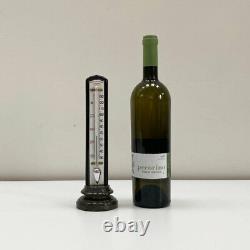

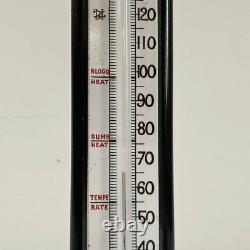
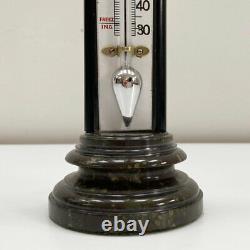
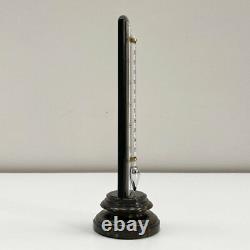
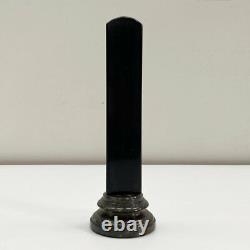
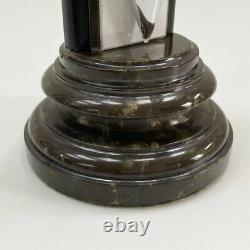
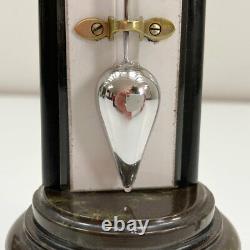

For sale, a large Victorian desk thermometer with serpentine stone base by Negretti & Zambra. This fabulous example is comprised of a graduated and turned serpentine stone base with a black ebonised wooden upright stand affixed to the top.
The front face sports a superb opaline glass and painted Fahrenheit scale reading 30 to 130 degrees on the right and with various temperature indicators to the right. The crest of the glass scale is painted in red with Negretti & Zambra, London and the company's N&Z logo can be seen in black to the left handside on the upper scale.
The thermometer is also a delight with a wide bore glass cane providing very clear readings and an unusually large tear drop bulb at the base. The combination of opaline glass, a robust thermometer, a black gloss finish to the upstand and the serpentine base makes this a stellar example of its type. The addition of Serpentine also being quite an interesting medium given its relationship to the Royal Family at the time.
The stone was unwittingly championed by Prince Albert during a visit to the Lizard Peninsula in Cornwall where the stone is most common. An interesting article from the 1880's by EW Crofts relates that in 1846, Queen Victoria and Prince Albert arrived in Mount's Bay on their steam yacht, The Victoria & Albert. After landing at Penzance, Prince Albert visited the Geological Society's Museum where he left with two specimens of serpentine in which he took particular interest. Following this, a number of enterprising minds formed what became "The London and Penzance Serpentine Company" and in 1851 began to introduce serpentine wares to the metropolis.
It is perhaps interesting to consider whether this occasion may have prompted the use of such a stone within the Negretti & Zambra product range. Negretti & Zambra were a leading name in the production of meteorological and scientific instruments and had a company history dating back to 1850 although their parents were amongst those Italian emigres that bolstered the British meteorological instrument making industry at the turn of the century. Throughout their long and esteemed history they exhibited at British and international industrial fairs and became makers to both Queen Victoria and Edward VII. Owing to changes in the business, the firm ceased the public retailing of scientific instruments sometime around the late 1960's and continued with a focus on the aviation industry in numerous guises until its eventual liquidation in the year 2000. They are today perhaps the most collected of the scientific instrument firms which bears testament to the quality of their work.
Jason Clarke Antiques are happy to discuss carriage, condition or for any other queries, alternatively, you can also message us and we will endeavour to come back to you as soon as possible. This item is in the category "Antiques\Science/Medicine\Scientific Instruments". The seller is "jason750_1" and is located in this country: GB. This item can be shipped to United Kingdom.- Period: 1800 to 1900
- Antique: Yes
- Material: Glass
- Type: Thermometer

